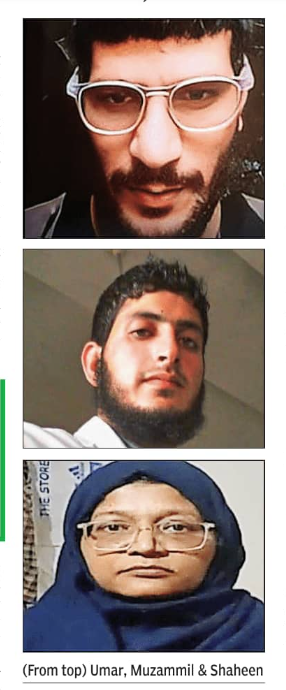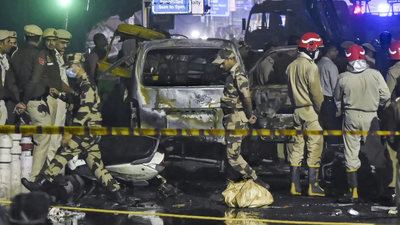NEW DELHI: In quiet corners of Al-Falah University, rooms 4 and 13 were hiding some chilling secrets — maybe a blueprint of terror disguised in diaries and notebooks. Investigators probing the Delhi Red Fort blast are now piecing together findings from diaries and notebooks, including codes, cryptic dates and notes left behind by suspects Dr Umar Mohammad and Dr Muzammil Ganaie.According to officials, diaries and notebooks were seized from Umar’s room number 4 and Muzammil’s room number 13, in the university’s building 17. They exposed a network of over 25 names, largely from Jammu and Kashmir and Faridabad. The diaries also mentioned dates from November 8 to 12 — the very window when the Red Fort blast took place on November 10, killing 13 people.ALSO READ: Delhi car blast probe: First image of Red Fort bomber Umar Un Nabi spotted near mosque

The word ‘operation’ was repeatedly mentioned in the diaries, hinting at a larger and well-orchestrated plan. Room 13, occupied by Dr Muzammil, is the same place, just 300 meters away from where police had earlier unearthed 360 kg of explosives in Dhauj.
Numbers, initials, and symbols: Secrets inside diaries
The recovered notebook contained coded entries — numbers, initials, and symbols — that intelligence teams are now decoding. Meanwhile, Room 4, where Dr Umar lived, revealed similar notes suggesting logistical coordination.ALSO READ: ‘Money dispute between docs’: 8 Delhi car blast suspects planned serial strikes across 4 cities — new details emerge

(From top) Umar, Muzammil & Shaheen
The “white-collar terror” appears to have been two years in the making. According to sources, Umar and Muzammil, had quietly worked with other people under the cover of campus life. Investigators are now questioning a few university staff, including a hospital compounder for possible role in supplying materials or facilitating communication.
Fundraising behind closed doors
According to a news report from ANI, Dr Muzammil, Dr Adeel, Dr Umar, and Shaheen, accused in Delhi blast case, jointly raised approximately Rs 20 lakh in cash. The money was handed over to Umar for operational expenses. Sources revealed that the funds were allegedly used to procure over 20 quintals of NPK fertiliser worth around Rs 3 lakh from Gurugram, Nuh, and adjoining areas, for making IEDs.
Doctors were planning multi-city deadly terror attack
The recovered notebooks and diaries are now at the heart of the investigation. The scribbled codes, dates and notes suggest that the i20 blast near the Red Fort may have been just one part of a broader operation. According to ANI, sources close to investigative agencies revealed that around eight suspects were allegedly preparing to execute coordinated explosions at four different locations across the country. Each pair was assigned to carry multiple improvised explosive devices (IEDs) for simultaneous attacks. A source told TOI, “The Delhi blast happened on Nov 10. Even if it was not meant to happen that day, the coded messages in the diaries suggest they were planning something big between Nov 8 and 12.”The sources told ANI that police successfully foiled major terror conspiracy involving a plan to carry out a series of blasts across multiple cities.

What does the university say?
Al Falah University in Haryana’s Faridabad, which is under the scanner, distanced itself from the terror-linked doctors. “We are deeply saddened and anguished by the unfortunate developments that took place and condemn the same. Our thoughts and prayers are with all the innocent people affected by these distressing events,” a statement issued by University vice chancellor prof (Dr) Bhupinder Kaur Anand said.”We have also learnt that two of our doctors have been detained by the investigating agencies. We wish to make it clear that the University has no connection with the said persons apart from them being working in their official capacities with the University,” she said.
What happens next
The probe has extended, focusing on supply chains — from those who provided batteries and rented vehicles to anyone who helped store explosives. Go to Source


